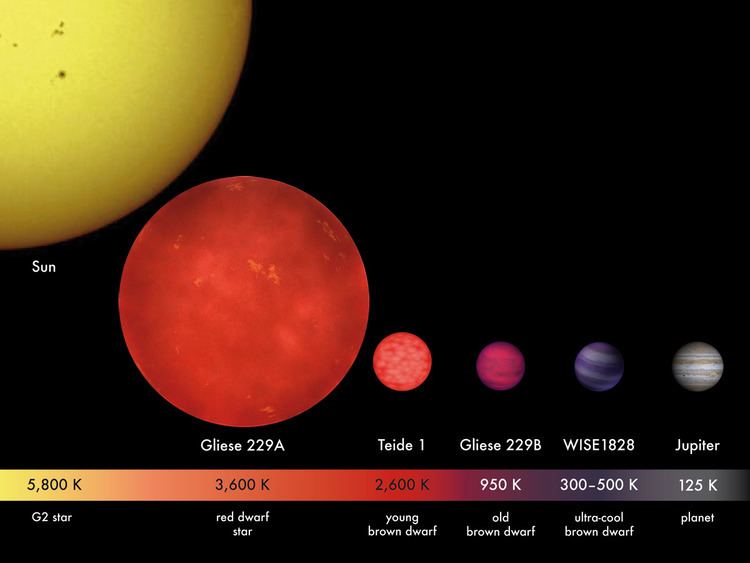 | ||
Jupiter mass (MJ or MJup) is the unit of mass equal to the total mass of the planet Jupiter (7027189800000000000♠1.898×1027 kg, 317.83 Earth mass; one Earth mass equals 0.00315 Jupiter masses). Jupiter mass is used to describe masses of the gas giants, such as the outer planets and extrasolar planets. It is also used in describing brown dwarfs.
The most massive exoplanets are typically described in terms of Jupiter masses as this provides a convenient scale for comparison. A Jupiter-mass planet at an orbital distance of 1 AU from a Sun-like star causes an amplitude shift of 28 m/s, which is detectable with current technology. The most readily detectable planets through radial velocity measurements have high mass and close orbits. This produces a selection effect for planets of Jupiter mass. Likewise, Jupiter mass or higher planets are more likely to be detected through other means, such as transits or microlensing.
A planet with a Jupiter mass might not have the same dimensions. The theoretical minimum mass a star can have, and still undergo hydrogen-1 fusion at the core, is estimated to be about 75 times the mass of Jupiter, while fusion of deuterium can occur at masses as low as 13 Jupiters.
In the Solar System, the masses of the outer planets can be listed in Jupiter mass. The other gas giants are far less massive than Jupiter.
One Jupiter mass can be converted to related units:
In comparison, one Solar mass is equivalent to:
Jupiter comprises roughly three-quarters of the mass of the solar system excluding the Sun.
